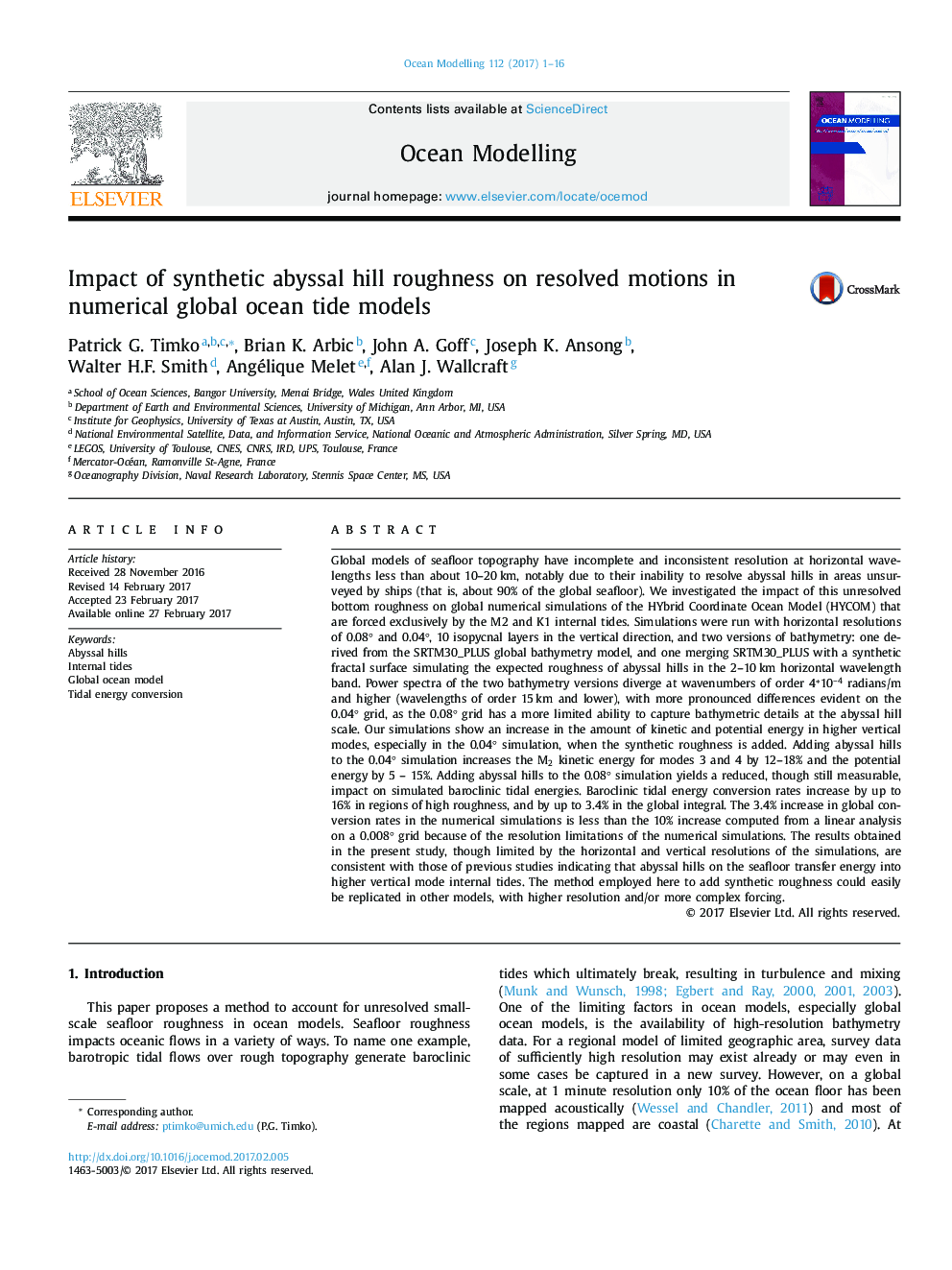| Article ID | Journal | Published Year | Pages | File Type |
|---|---|---|---|---|
| 5766366 | Ocean Modelling | 2017 | 16 Pages |
Abstract
Global models of seafloor topography have incomplete and inconsistent resolution at horizontal wavelengths less than about 10-20 km, notably due to their inability to resolve abyssal hills in areas unsurveyed by ships (that is, about 90% of the global seafloor). We investigated the impact of this unresolved bottom roughness on global numerical simulations of the HYbrid Coordinate Ocean Model (HYCOM) that are forced exclusively by the M2 and K1 internal tides. Simulations were run with horizontal resolutions of 0.08° and 0.04°, 10 isopycnal layers in the vertical direction, and two versions of bathymetry: one derived from the SRTM30_PLUS global bathymetry model, and one merging SRTM30_PLUS with a synthetic fractal surface simulating the expected roughness of abyssal hills in the 2-10 km horizontal wavelength band. Power spectra of the two bathymetry versions diverge at wavenumbers of order 4*10-4 radians/m and higher (wavelengths of order 15 km and lower), with more pronounced differences evident on the 0.04° grid, as the 0.08° grid has a more limited ability to capture bathymetric details at the abyssal hill scale. Our simulations show an increase in the amount of kinetic and potential energy in higher vertical modes, especially in the 0.04° simulation, when the synthetic roughness is added. Adding abyssal hills to the 0.04° simulation increases the M2 kinetic energy for modes 3 and 4 by 12-18% and the potential energy by 5 - 15%. Adding abyssal hills to the 0.08° simulation yields a reduced, though still measurable, impact on simulated baroclinic tidal energies. Baroclinic tidal energy conversion rates increase by up to 16% in regions of high roughness, and by up to 3.4% in the global integral. The 3.4% increase in global conversion rates in the numerical simulations is less than the 10% increase computed from a linear analysis on a 0.008° grid because of the resolution limitations of the numerical simulations. The results obtained in the present study, though limited by the horizontal and vertical resolutions of the simulations, are consistent with those of previous studies indicating that abyssal hills on the seafloor transfer energy into higher vertical mode internal tides. The method employed here to add synthetic roughness could easily be replicated in other models, with higher resolution and/or more complex forcing.
Related Topics
Physical Sciences and Engineering
Earth and Planetary Sciences
Atmospheric Science
Authors
Patrick G. Timko, Brian K. Arbic, John A. Goff, Joseph K. Ansong, Walter H.F. Smith, Angélique Melet, Alan J. Wallcraft,
